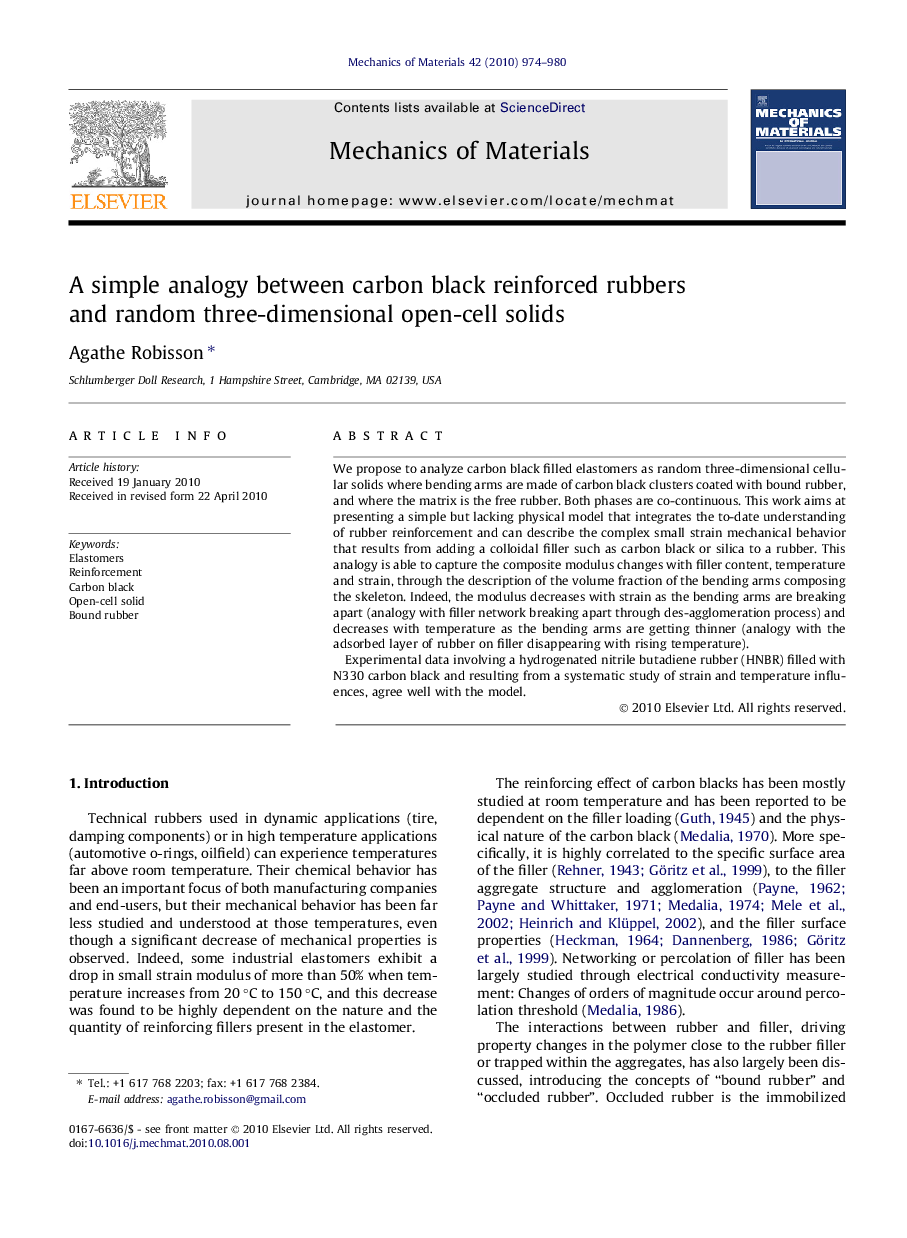| Article ID | Journal | Published Year | Pages | File Type |
|---|---|---|---|---|
| 797670 | Mechanics of Materials | 2010 | 7 Pages |
We propose to analyze carbon black filled elastomers as random three-dimensional cellular solids where bending arms are made of carbon black clusters coated with bound rubber, and where the matrix is the free rubber. Both phases are co-continuous. This work aims at presenting a simple but lacking physical model that integrates the to-date understanding of rubber reinforcement and can describe the complex small strain mechanical behavior that results from adding a colloidal filler such as carbon black or silica to a rubber. This analogy is able to capture the composite modulus changes with filler content, temperature and strain, through the description of the volume fraction of the bending arms composing the skeleton. Indeed, the modulus decreases with strain as the bending arms are breaking apart (analogy with filler network breaking apart through des-agglomeration process) and decreases with temperature as the bending arms are getting thinner (analogy with the adsorbed layer of rubber on filler disappearing with rising temperature).Experimental data involving a hydrogenated nitrile butadiene rubber (HNBR) filled with N330 carbon black and resulting from a systematic study of strain and temperature influences, agree well with the model.
